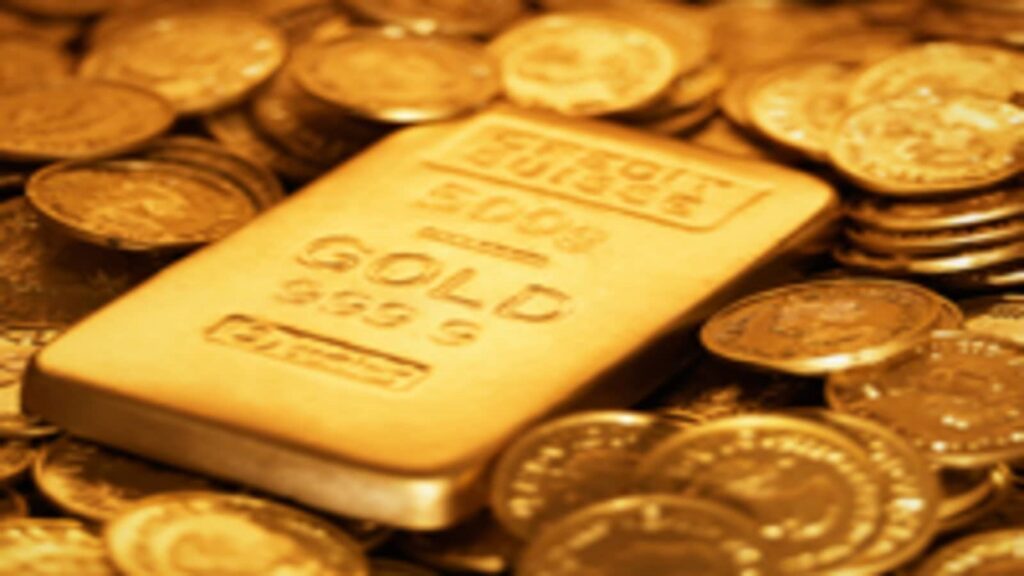A lesson in gold price fluctuations and how to avoid future pitfalls
Gold is a type of asset that has attracted much more attention in the current uncertain macroeconomic environment than in the past, especially after the volatility of the gold price. This is partly because gold has historically proved to be an excellent hedge against inflation, a strategic reserve asset and a safe haven when the world’s economies are in the doldrums.
With the ongoing sovereign debt crisis, each portfolio should allocate some capital to investments in gold and other precious metals as a purely strategic investment and diversification. Some skeptics claim that gold is a bubble and some, on the other hand, love it so much that they don’t mind being called “gold bugs”. There are a few important things to understand about gold before investing in this versatile asset.
It is important to be aware of the historical development of the gold price in the 1980s because it was one of the most important periods for gold, just as today’s development is just as important. History provides some valuable insights into how the gold price may evolve in the future, especially when sentiment becomes one-sided. While there is no denying that there are a number of macroeconomic factors in gold’s favor, the sharp 15% drop in the price of gold over a few days in September 2011, as shown in the chart below, raises a number of questions about the volatility and risks associated with this precious metal.
Many analysts and journalists make all sorts of historical analyses of the gold price and it is not uncommon for them to use the high price at which gold traded in the first quarter of 1980, over USD 800 per troy ounce. However, it is important to remember that this price was an extreme movement and that gold only traded above USD 700 per troy ounce for a few weeks during this period, and then fell into the range of USD 300 to 500 per troy ounce.
There are a number of factors that caused the price of gold to rise sharply in the first quarter of the 1980s and then fall sharply. We have touched on some of these things before and we have put some clickable links in this article to what we have written before because it is important to know the history in case a similar situation arises in the future.
1. The dramatic rise and fall of the gold price in 1980
During this period, the CPI and the general fear of inflation drove the general trend in the price of gold, although there was not always a stronger correlation between them. The extreme rise and subsequent fall in the price of gold in the 1980s was caused by a combination of extreme geo-political events, such as the Russian invasion of Afghanistan in December 1979, the hostage crisis in Iran, etc., as well as several strong unconventional political actions and events in the financial markets. These include the increase in the Fed’s policy rate from 13% to 20% in Q1 1980 by then-FED Governor Volcker, the Hunt brothers’ attempt to take control of the silver market and their inability to meet increased collateral requirements that caused the price of silver to plummet in March 1980. All in all, a series of interesting events resulted in a roller coaster ride for the gold price in 1980.
1.1 Inflation adjustments
The US methodology for measuring inflation relative to the CPI has changed since 1980, and there are some conspiracy theorists who believe that this was done to understate inflation.
Even if we use the traditional measure of inflation, the Consumer Price Index (CPI), today’s gold price is significantly lower than the inflation-adjusted gold price in Q1 1980. Comparing the gold price from January 1980 with today’s gold price gives a false picture and does not take into account the state of the financial markets in 1980. The peak in the gold price in 1980 was due, as we have seen above, to geopolitical tensions, but the inflation-adjusted gold price peak in 1980 was $2,337 per troy ounce, and the average gold price that year, adjusted for inflation, was $1,850 per troy ounce.
2. Gold price appreciation in January 1980
The price of gold rose dramatically in the period from December 1979 to January 1981, mainly for two reasons.
2.1 Geopolitical reasons
Soviet invasion of Afghanistan: On December 23, 1979, Soviet military units occupied Kabul, the capital of Afghanistan. By December 28, the Soviets had taken control of the entire country and Babrak Karmal replaces the overthrown and executed President Hafizullah Amin.
The hostage crisis in Iran. The Iran Hostage Crisis was a diplomatic crisis between Iran and the United States in which 53 American citizens were held hostage in Tehran for 444 days, from November 4, 1979 to January 20, 1981.
2.2 The fear of inflation
US inflation had risen sharply in the late 1970s, peaking at over 13% in December 1979. The gold price had risen with inflation, as measured by the CPI (annualized), although the increase in inflation was not the primary cause of the gold price peak in January 1980.
3. Gold price fall in January 1980 onwards
The sharp correction in the price of gold in the period January to March 1980 and the subsequent downward trend in the price of gold were caused in part by:
3.1 FED rate hikes
The interest rate hikes implemented by Fed Chairman Paul Volcker to curb inflation caused the CPI to decline from March 1980 after interest rates were raised from 13% to a peak of 21.5% in June 1981. The increase was almost double the average policy rate of 11.2% in 1979. The direct effect of this was a gradual decline in the CPI from 14.8% in March 1980 to 2.6% in June 1983.
3.2 Silver Thursday
Silver Thursday added selling pressure to the precious metals markets. On March 7, 1980, the Hunt brothers failed to meet a $100 million collateral requirement on their large silver position, causing panic in the silver markets. In order to rescue the situation, a consortium of banks led by Fed chief Paul Volcker stepped in and provided the Hunt brothers with a USD 1.1 billion credit line to save the situation.
3.3 The US response to the Soviet invasion of Afghanistan.
In January 1980, President Jimmy Carter gave a speech to the American people on the Russian-Afghan situation. The US had partnered with the UK and China to secretly support the Afghan rebels. The shock of the Russian occupation of Afghanistan began to wear off. The US had intensified Operation Cyclone, the code name for the CIA’s plan to arm the Afghan Mujahideen during the Soviet war in Afghanistan from 1979 to 1989.
As you can see, it is important to be aware of geopolitical events when investing in gold, as they may push the gold price to short-term extreme levels during high volatility.
Given the current uncertain macroeconomic environment, it is worth buying gold during downturns like the current one.
About the Viking
With Viking’s signals, you have a good chance of finding the winners and selling in time. There are many securities. With Viking’s autopilots or tables, you can sort out the most interesting ETFs, stocks, options, warrants, funds, and so on. Vikingen is one of Sweden’s oldest equity research programs.
Click here to see what Vikingen offers: Detailed comparison – Stock market program for those who want to get even richer (vikingen.se)













